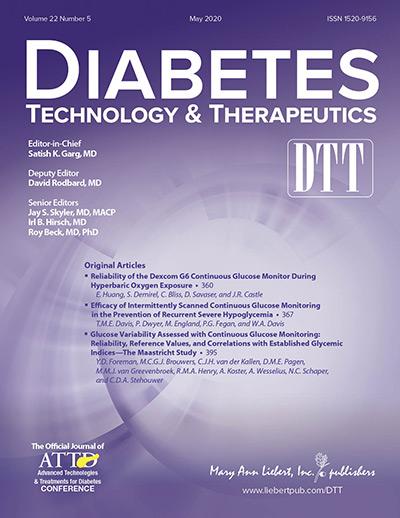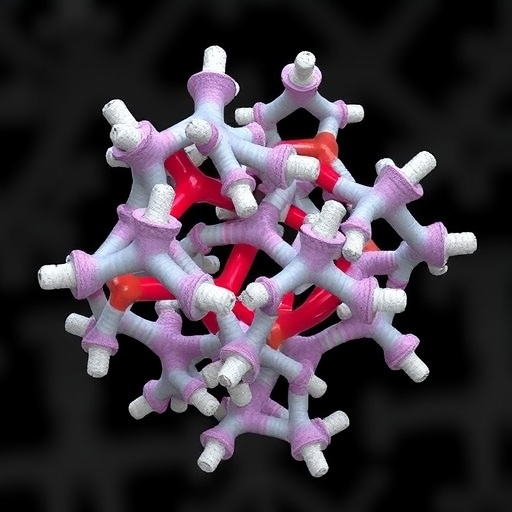
Credit: Mary Ann Liebert, Inc., publishers
New Rochelle, NY, May 15, 2020–Data collected over a 15-week period showed that using virtual care to manage diabetes patients in the hospital does not have a negative impact on their glycemic outcomes. This study, aimed at reducing provider and patient exposure during the COVID-19 pandemic, has broader implications for implementing telehealth to diabetes care in remote locations and to limit the transmission of hospital-acquired infections. The study is published in Diabetes Technology & Therapeutics (DTT), a peer-reviewed journal from Mary Ann Liebert, Inc., publishers. Click here to read the full-text article free on the Diabetes Technology & Therapeutics (DTT) website.
The article entitled “Inpatient Transition to Virtual Care During COVID-19 Pandemic” describes the use of “virtual care” care for inpatient diabetes care to reduce exposure to the COVID-19 virus and to reduce the use of personal protective equipment. Morgan Jones, MD and coauthors from University of North Carolina (UNC), Chapel Hill and Tufts University, Boston, MA, present a model for virtual care in which all face-to-face patient contact was stopped on March 22, 2020. Telehealth included a telephone interview with patients (or a family member or their primary nurse) each morning and occasional telemedicine visits by an endocrinologist. The researchers concluded that glycemic control was similar with the transition to virtual care.
“The COVID-19 pandemic has forced all of us to find alternate ways to deliver quality care to patients with diabetes,” says DTT Editor-in-Chief Satish Garg, MD, Professor of Medicine and Pediatrics at the University of Colorado Denver (Aurora). “The study from UNC documented similar glycemic outcomes when transitioned to virtual care during the pandemic. It is important to note that the data presented is from finger-stick blood glucose values (FSBG). The smooth transition to virtual care may have long-term implications especially for remote area consults where endocrinologists may not be available. The real unknown is if the payors will continue similar reimbursements after COVID is gone. The FDA recently authorized use of continuous glucose monitoring (CGM) for the inpatient setting, and UNC authorized for hospital inpatient use of CGM only last week. I believe authors are in the process of implementing the use of CGM for inpatient diabetes management.”
###
About the Journal
Diabetes Technology & Therapeutics (DTT) is a monthly peer-reviewed journal that covers new technology and new products for the treatment, monitoring, diagnosis, and prevention of diabetes and its complications. Led by Editor-in-Chief Satish Garg, MD, the Journal covers topics that include noninvasive glucose monitoring, implantable continuous glucose sensors, novel routes of insulin administration, genetic engineering, the artificial pancreas, measures of long-term control, computer applications for case management, telemedicine, the Internet, and new medications. Tables of contents and a free sample issue may be viewed on the Diabetes Technology & Therapeutics (DTT) website. DTT is the official journal of the International Conference on Advanced Technologies & Treatments for Diabetes (ATTD).
About ATTD
The International Conference on Advanced Technologies & Treatments for Diabetes (ATTD) presents top caliber scientific programs that have provided participants with cutting-edge research and analysis into the latest developments in diabetes-related technology. A unique and innovative conference, ATTD brings the world’s leading researchers and clinicians together for a lively exchange of ideas and information related to the technology, treatment, and prevention of diabetes and related illnesses.
About the Publisher
Mary Ann Liebert, Inc., publishers is a privately held, fully integrated media company known for establishing authoritative peer-reviewed journals in many promising areas of science and biomedical research, including Thyroid, Metabolic Syndrome and Related Disorders, Journal of Aerosol Medicine and Pulmonary Drug Delivery, Childhood Obesity, and Population Health Management. Its biotechnology trade magazine, GEN (Genetic Engineering & Biotechnology News ), was the first in its field and is today the industry’s most widely read publication worldwide. A complete list of the firm’s 80 journals, books, and newsmagazines is available on the Mary Ann Liebert, Inc., publishers website.
Media Contact
Kathryn Ryan
[email protected]
Original Source
https:/
Related Journal Article
http://dx.




